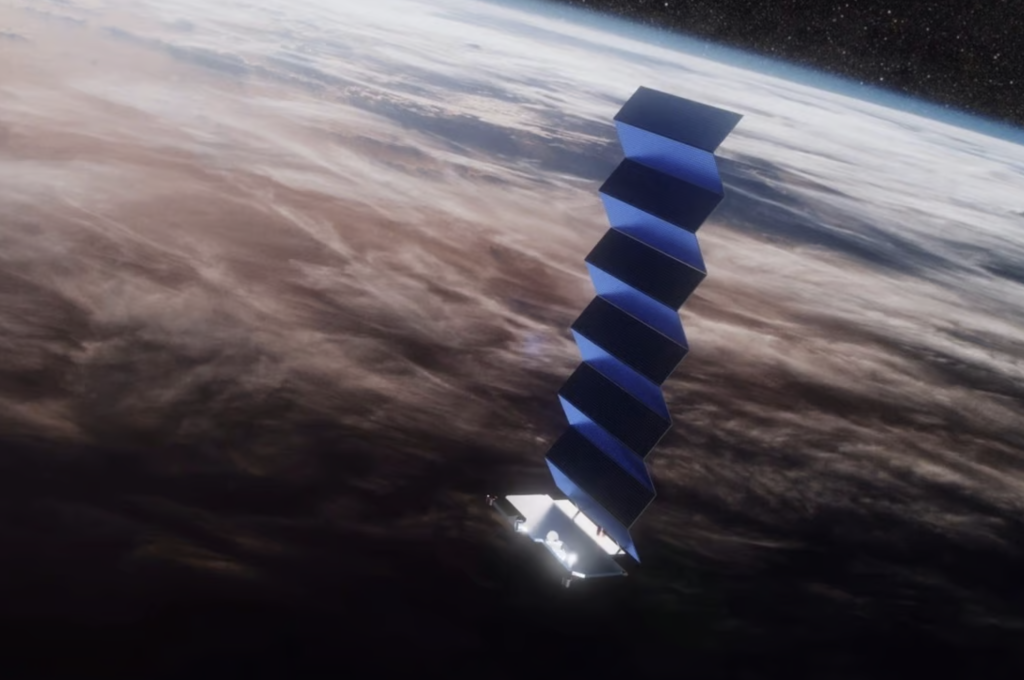In the early weeks of the war in Ukraine, Starlink – SpaceX’s satellite internet service company – provided Kiev access to thousands of its satellites as dual-use internet service with speeds of up to 150 mbps. This marked the first ever use of satellites and services of the private space industry, deliberately or otherwise, in terrestrial armed conflict.
Starlink’s services were initially intended as a countermeasure to the attacks on Ukraine’s electrical and communications infrastructure. In December 2022, SpaceX announced that it would send Ukraine about 10,000 more terminals, adding to the 22,000 delivered since the beginning of the war. During these months, Starlink ensured Russian attempts to jam its network in combat zones were nullified.
However, by February 2023, things changed drastically. SpaceX announced it would take steps to restrict the access of Starlink, accusing the Ukrainian military of using it to power drones in its ongoing conflict in Russia. At the Federal Aviation Administration conference in Washington, on February 8, Gwynne Shotwell, the Chief Operating Officer of SpaceX said the company was pleased to work with Ukraine in its “fight for freedom,” but the Starlink service was “never meant to be weaponised.” “Ukrainians have leveraged it in ways that were unintentional and not part of any agreement.”
SpaceX’s change of stance, largely considered a corrective measure of an earlier unwary decision, brings to the fore numerous questions about the legality, extent, and plausibility of space-based satellite applications in active warfare. How has the satellite constellation been applied in the case of the war in Ukraine? Does SpaceX violate any of the norms and principles of outer space by offering its services to Ukrainian war efforts?
In the early weeks of the war, after the services of Starlink were activated in Ukraine, the internet from Starlink played a key role in the Siege of Azovstal ensuring the ability of Ukrainian troops to successfully defend themselves in Mariupol. In March 2022, using the Operation Air Corridor (OAC) two helicopters managed to carry Ukrainian special forces and weaponry, including the first Starlink terminal to the besieged Mariupol. The internet services of Starlink were also introduced to the trains of Ukrainian Railways to fasten the restoration of communication in Kiev. As early as March 2022, The Times reported that Starlink was being used by the Ukrainian military to connect the drones in their attacks on the forces, and eventually towards Russian territory. By June 2022, reports of Ukraine receiving new batches of terminals modified for the intelligence units emerged. Clearly, the services of Starlink have played a crucial role in the new artillery fire coordination systems and one of the reasons for the surprising superiority of the Ukrainian defense in the initial months of the war can be attributed to this.
In October 2022, at the UN’s committee on disarmament and international security, Russia threatened to shoot down the Starlink satellites calling it a “provocative use of civilian satellites for military purposes.” News reports discussed the existence of a Russian military strategy to collectively target the thousands of satellites in the LEO. Additionally, the Russian military was revealed to be causing damage to terminals and using their Tirada-2S electronic jamming devices to block communications.
Interestingly, Ukrainian consternation began at the same time. An October 2022 Financial Times report carried statements from Ukrainian officials criticising Starlink’s widespread connection failures and losses in communication. Elon Musk remarked that the services to Ukraine were costing 20 million dollars per month and stated that the access could not go on indefinitely. Starlink then raised the prices of the terminals; documents and bills of the participation of both private and government agencies of the UK, Poland, and the US, contributing to the continued Starlink services, were publicly revealed. The February 2023 statement to limit their support to Ukraine, comes in this context. As the only system that is working in Ukraine, the decision to limit Starlink’s access to Kiev would be a blow to their existing strategies.
The providing of Starlink to the war efforts of Ukraine raises important questions about the role of the US and its responsibility in the ongoing conflict. Legally speaking, the Outer Space Treaty (OST) attributes all behaviour including that of commercial entities, in outer space to the responsibility of its state. The US does not want to be seen violating its neutrality obligations with the deliberate and militarized use of Starlink terminals demonstrated during the war.
The commercial Starlink services have technically proven successful when it comes to providing off-grid bandwidth internet access. This could be a civilian technological milestone, but, being used in a conflict zone, is a teaser for the dual-use of commercial space-based assets use by militaries and more dangerously by non-state actors. This entire Starlink in Ukraine episode, which lasted for a year, has created an avenue for new international legal challenges.
(The author is a Doctoral Scholar at the School of Conflict and Security Studies, NIAS. Her thesis looks at Militarisation in Outer Space. Views are personal)


